Here is a sample of abstracts from the clinical research conducted at the NIH Clinical Center and published in a peer-reviewed medical journal in 2022. Links to the full text and video formats are provided if available.

Maintaining Momentum in Clinical Trials for Respiratory Viruses
Published in: Critical Care Medicine (December 2022)
COVID-19 has taught doctors about preparedness as it relates to emerging infections and clinical trials. Researchers must take the progress made in clinical trial design and infrastructure and build on it, so we are ready to answer research and efficacy questions regarding novel therapeutics for future emerging infections.
Read the article.

Pain Research and Children with Severe Intellectual Disability: Ethical Challenges and Imperatives
Published in: The Lancet (December 2022)
Children with severe intellectual disabilities encounter inequities in pain-related care, yet little pain research includes them. Since they are unable to verbally communicate their pain, it creates challenges for their participation in pain research. However, improving the ethical guidelines for pain research and applying a framework for assessing clinical research is possible.
Read the article.
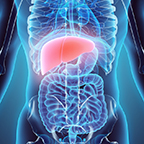
Longitudinal multi-omics analyses of the gut–liver axis reveals metabolic dysregulation in hepatitis C infection and cirrhosis
Published in: Nature Microbiology (December 2022)
Scientists used a multi-disciplinary analysis of blood, faeces, and liver tissue to characterize the gut-liver axis of patients with Hepatitis C virus (HCV). This study gives insight into the gut–liver axis in HCV and non-HCV liver diseases, and provides a foundation for future therapies.
Read the article.

Evaluation of Multi-layer Perceptron Neural Networks in Predicting Ankle Dorsiflexion in Healthy Adults using Movement-related Cortical Potentials for BCI-Neurofeedback Applications
Published in: Institute of Electrical and Electronics Engineers (IEEE) (November 2022)
Neural Networks show great potential for minimizing preprocessing steps in Brain-Computer Interface systems. Scientists tested novel methods to rapidly detect brain signals prior to moving the ankle, for use in neurofeedback training for motor rehabilitation.
Read the article.
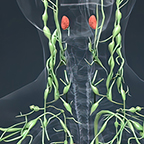
Universal lymph node detection in T2 MRI using neural networks
Published in: The International Journal for Computer Assisted Radiology and Surgery (November 2022)
Scientists succeeded in using Artificial Intelligence technology to assist in lymph node detection. This detection can be critical in assessing lymphadenopathy (swelling of lymph nodes) and may lead to a better control of infection and cancer spread (metastases).
Read the article.
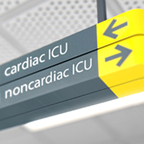
Outcomes of Patients With Primary Cardiac Diagnoses Admitted to Cardiac vs Noncardiac Intensive Care Units
Published in: JACC: Advances (October 2022)
Researchers compared outcomes for patients with primary cardiac diagnoses admitted to either noncardiac or cardiac intensive care units (ICUs). Initial analysis showed better outcomes in cardiac ICUs, while noncardiac ICUs favored after including concurrent noncardiac critical illnesses. Highlights importance of Critical Care Medicine training for cardiologists managing critical illnesses in cardiac ICUs.
Read the article.
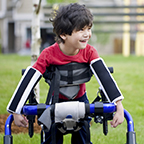
External walking environment differentially affects muscle synergies in children with cerebral palsy and typical development
Published in: Frontiers in Human Neuroscience (September 2022)
Researchers compared the difference in how muscles work together in children with cerebral palsy and children with typical development using three different walking conditions on a treadmill. The former group were more affected by the changes in walking conditions.
Read the article.

Sleep, time, and space—fatigue and performance deficits in pilots, commercial truck drivers, and astronauts
Published in: SLEEP Advances (September 2022)
Researchers reviewed 28 laboratory and field-based studies that had either objective or subjective measurements of sleep or fatigue. Shorter sleep durations, short off-duty time, and early-morning start times were associated with slower reaction times, more lapses in attention, and premature responses on psychomotor vigilance tests.
Read the article.

Psychedelic-Assisted Psychotherapy to Treat Psychiatric and Existential Distress in Life-Threatening Medical Illnesses and Palliative Care
Published in: Neuropharmacology (September 2022)
Studies suggest preliminary evidence that psychedelic-assisted psychotherapy may provide robust and sustained quality-of-life improvements for patients in life-threatening or palliative situations. These patients experienced less anxiety, depression, suicidal ideation and existential distress. More rigorous research is recommended to further assess effectiveness of these psychedelic therapies.
Read the article.

Misclassification Bias in Estimating Clinical Severity of SARS-CoV-2 Variants
Published in: The Lancet Journal (September 2022)
Reliance on SARS-CoV-2 test positivity alone to identify cases of COVID-19 hospitalizations could have introduced misclassification bias in a study assessing the severity of SARS-CoV-2 omicron and delta variants.
Read the article.
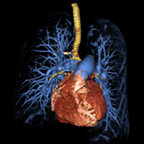
Plasma Cell-Free DNA Predicts Survival and Maps Specific Sources of Injury in Pulmonary Arterial Hypertension
Published in: Circulation (August 2022)
Risk prediction in pulmonary arterial hypertension (PAH) remains a major challenge. Cell-free DNA (cfDNA) is a noninvasive marker of cellular injury and its significance in pulmonary arterial hypertension (PAH) is unknown. In two PAH cohorts, plasma cfDNA was measured and found elevated in patients with PAH compared with healthy controls and increases with disease severity.
Read the article.

An Exploratory Study of Pro-Inflammatory Cytokines in Individuals with Alcohol Use Disorder: MCP-1 and IL-8 Associated with Alcohol Consumption, Sleep Quality, Anxiety, Depression, and Liver Biomarkers
Published in: Frontiers in Psychiatry (August 2022)
Chronic sleep disturbances from heavy alcohol use may contribute to a sustained inflammatory state. Researchers examined pro-inflammatory cytokines in individuals with alcohol use disorder (AUD) and found associations with inflammation and alcohol consumption, sleep quality, anxiety and depression. Further research on inflammation in individuals with AUD is needed.
Read the article.

Improvement of Liver Metabolic Activity in People with Advanced HIV After Initiation of Antiretroviral Therapy
Published in: AIDS (July 2022)
Using advanced imaging (PET/CT), we found low glucose metabolism in the liver of untreated people living with HIV had improved, but did not resolve completely after long-term antiretroviral therapy. Residual liver metabolic changes in people with HIV after treatment should be further evaluated.
Read the article.

Examining the Relationships Between Sleep Physiology and the Gut Microbiome in Preclinical and Translational Research: Protocol for a Scoping Review
Published in: JMIR Publications (June 2022)
Researchers developed a protocol outlining methods to review research studying sleep and the gut microbiome. This research has been undertaken to determine the methodologies used to quantify sleep and the microbiome and synthesize microbiome responses associated with healthy/unhealthy sleep.
Read the article.

Low-Dose Methylprednisolone Treatment in Critically Ill Patients with Severe Community-Acquired Pneumonia
Published in: Intensive Care Medicine (May 2022)
Severe community-acquired pneumonia (CAP) requiring Intensive Care Unit admission causes significant morbidity and mortality. Treatments directed at reducing inflammation in severe CAP have potential benefit. In a randomized multi-center trial of 586 patients with severe CAP, corticosteroid treatment did not significantly reduce 60-day mortality.
Read the article.

Early Intervention for Very Young Children with or at High Likelihood for Autism Spectrum Disorder: An Overview of Reviews
Published in: Developmental Medicine & Child Neurology (May 2022)
Autism spectrum disorder (ASD) is a neurodevelopmental condition with early childhood symptoms. As a result, there is growing movement toward identifying ASD during early, more rapid periods of brain development to initiate interventions sooner. However, while two different approaches show positive effects on outcomes, the added benefits of earlier interventions still lack strong evidence.
Read the article.

Navigating Pandemic Moral Distress at Home and at Work: Frontline Workers' Experiences
Published in: AJOB Empirical Bioethics (April 2022)
During the COVID-19 pandemic, frontline workers faced a series of challenges balancing family and work responsibilities. This article focuses on frontline workers’ perspectives on making work-life-community decisions in light of their increased COVID-19 exposure.
Read the article.
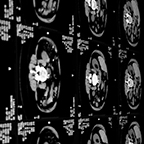
Fully Automated Abdominal CT Biomarkers for Type 2 Diabetes Using Deep Learning
Published in: Radiology (April 2022)
Researchers investigate computed tomography (CT) biomarkers that may be associated with the presence of type 2 diabetes using fully automated deep learning. The researchers found changes in the pancreases of patients as early as 7 years before the patients were diagnosed with diabetes.
Read the article.
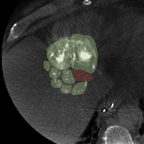
Cone-Beam Computed Tomography-Based Spatial Prediction of Drug Dose After Transarterial Chemoembolization Using Radiopaque Drug-Eluting Beads in Woodchuck Hepatocellular Carcinoma
Published in: Investigative Radiology (March 2022)
CT imaging was used to predict the distribution of chemotherapy following intra-arterial delivery of drug-releasing microspheres to a woodchuck liver tumor. This “drug mapping” concept could improve drug targeting and coverage of tumors, reducing side effects and improving treatment outcomes for patients with liver cancer.
Read the article.
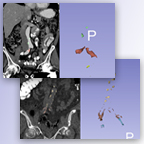
Assessment of Aortoiliac Atherosclerotic Plaque on CT in Prostate Cancer Patients Undergoing Treatment
Published in: PubMed (March 2022)
Researchers compared atherosclerotic plaque in major arteries of the abdomen and pelvis of men with and without prostate cancer. The atherosclerotic plaque in prostate cancer patients did not differ from the normal control group, but were closely associated with age and heart disease.
Read the article.
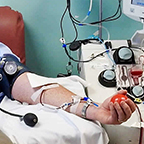
Increased Serum Pro-B-Type Natriuretic Peptide in Hematopoietic Progenitor Cell Donors Stimulated with G-CSF
Published in: Journal of Clinical Apheresis (March 2022)
In a case series of 18 healthy stem cell donors who received a common stimulation regimen, a protein that is commonly associated with heart failure increased transiently in their blood. The long-term impact on donor's health is pending evaluation.
Read the article.

IDSA Guidance and ESCMID Guidelines: Complementary Approaches Toward a Care Standard for MDR Gram-Negative Infections
Published in: Clinical Microbiology and Infection (February 2022)
As antibiotic-resistant bacteria spread globally, there is an increasing need for experts to provide recommendations on how to treat these infections. In this editorial, the strengths and weaknesses of the recommendations by the Infectious Diseases Society of America and European Society of Clinical Microbiology and Infectious Diseases are highlighted.
Read the article.
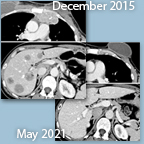
Breast Cancers Are Immunogenic: Immunologic Analyses and a Phase II Pilot Clinical Trial Using Mutation-Reactive Autologous Lymphocytes
Published in: PubMed (February 2022)
In a pilot clinical trial, 28 of 42 patients with metastatic breast cancer naturally raised immune lymphocytes targeting the expressed products of their cancer mutations. Three of six patients treated with these lymphocytes exhibited cancer regression. This experimental treatment may be an option for patients with metastatic breast cancer.
Read the article.
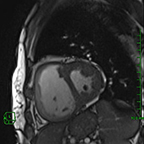
Mineralocorticoid Receptor Antagonist Treatment of Established Pulmonary Arterial Hypertension Improves Interventricular Dependence in the SU5416-Hypoxia Rat Model
Published in: American Journal of Physiology | Lung Cellular and Molecular Physiology (January 2022)
High-resolution cardiac MRI demonstrated that mineralocorticoid receptor blockade improved ventricular interdependence in a rat model of pulmonary arterial hypertension (PAH). This supports the use of advanced cardiac imaging in an ongoing clinical trial of spironolactone in PAH patients at the NIH Clinical Center.
Read the article.

Cross Cultural Adaptation and Cognitive Testing of a Psycho-Social-Spiritual Healing Measure, the NIH Healing Experiences in All Life Stressors-NIH-HEALS
Published in: Global Advances in Health and Medicine (January 2022)
The face and content validity of the NIH Healing Experiences in All Life Stressors (NIH-HEALS) was assessed in a population of cancer patients in Uganda. Some minor changes are recommended to culturally adapt this survey for the local context.
Read the article.

Adolescents, Parents, and Covid-19 Vaccination - Who Should Decide?
Published in: The New England Journal of Medicine (January 2022)
Researchers review various perspectives, barriers, and approaches regarding the age for informed consent and medical decision-making for COVID-19 vaccination among adolescents aged 12-17. Allowing adolescents to independently consent to the vaccination could increase vaccine uptake in this population.
Read the article.
Read more articles about research in the NIH Clinical Center in 2022.

